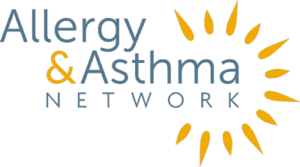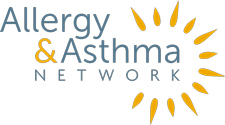Advances in Allergy & Asthma Series
This webinar first aired on July 23, 2020
Summary
Allergists care for patients throughout their lives. Dr. Kelly Maples leads us in a discussion on how health providers should be able to implement specific strategies not only to transition patients from pediatric to adult care, but also assist patients with the transitions that patients will undergo through their lifespans.
Webinar Objectives:
- Identify strategies to prepare patients and families through life transitions from daycare to school to adulthood allergy care.
- Develop a transition process from pediatric to adult allergy care.
Speaker
Dr. Kelly Maples
CME is available through ACAAI for this webinar
CNE is available through Allergy & Asthma Network’s Online Learning HQ
Question and Answers from the Webinar
Is it normal for parents to be nervous to send their food-allergic child to school?
Yes, it may be the first time someone is looking after their child. Infants and toddlers may be unable to communicate when they aren’t feeling well. In fact, 1 out of 4 parents worry that school is unsafe for a child with food allergies.
How can parents be less scared when sending their food allergy kids to school?
Things that can help alleviate parents’ fear include stock epinephrine at school or daycare, food product labeling, menus with food allergy info and food allergy education.
How common are food allergies in children?
Studies indicate 25% of parents believe their child has a food allergy. Providers can help parents be vigilant and prepared without being fearful.
How common are fatal food allergies in children?
The odds of a fatal food reaction are extremely rare and the odds that a child who has a known food allergy will die is 1 in 800,000 per year.
Most food allergy deaths occur in adolescents and young adults. It is rare under age 10. Those who do have had a prior reaction. Risk factors include delaying epinephrine, asthma, risk-taking behaviors and being upright at the time of the reaction.
Why is upright posture a risk factor for increased anaphylaxis fatalities?
This was found in a study in Great Britain of anaphylaxis fatalities in the emergency department. In anaphylaxis there is a lot of dilation of the blood vessels, so when people stand upright the blood will flow to the lower extremities. Lying down can help prevent that and help blood flow to the heart, lungs and brain.
What can parents do to prepare their food-allergic child to start school or daycare?
- Make sure there’s open communication with the school staff.
- Notify school/daycare of food allergies.
- Provide and review allergy management plan.
- Bring all medicines to the school or daycare.
- Work to develop a plan for your child.
Should schools be peanut free?
This is not supported by the literature and may in fact increase anxiety or send incorrect messages about the true danger of peanuts. This may cause a false sense of security and cause schools to be less prepared to deal with a peanut allergy.
Peanuts are not the only allergen to cause fatalities. In fact, milk is more likely to cause a fatal reaction than peanuts. Peanut allergens don’t aerosolize and smelling peanuts will not cause a full-body reaction. Skin contact with peanut butter or dust may cause skin reactions at worst.
How should parents prepare for their food-allergic child to start elementary school?
Remember that elementary school children are more independent and meals are less closely supervised. Parents need to communicate with the school about non-food treats and talk with their children about not sharing food and their allergy action plan.
How can parents prepare their food-allergic children to start middle and high school?
Remember that kids at this age are more independent and knowledgeable but may also engage in more risk-taking behavior.
Ask your children if they can answer the following questions to determine if they are ready to self-carry epinephrine and albuterol:
• Can they describe symptoms of anaphylaxis or asthma attack?
• Can they recognize need for epinephrine and/or albuterol?
• Can they demonstrate proper use of epinephrine and/or albuterol?
It’s also important to educate and empower your teen, as well as educate peers and school staff.
How can parents prepare their food-allergic young adults to transition to college or independent living?
This age group may not have health insurance.
• Be extra cautious when choosing foods, there may be less precautions in an educational environment.
• Teach them to communicate with peers, teammates, coaches, cafeteria staff and others about their allergies and when to call 911.
• Be aware that risk-taking behaviors continue – many don’t routinely carry epinephrine and don’t practice food avoidance.
• Prepare to transition to adulthood and teach them to manage their own health – this doesn’t happen suddenly at 18 but can be more gradual.
What are special considerations for dealing with older adults with food allergies?
Older adults may be on multiple medications and have increased mortality and comorbidities from asthma and allergies. Certain medications should be avoided in older adults, especially those with risk factors that can cause osteoporosis or falling.
How can health professionals combat the misbelief that peanut allergens are airborne?
According to the American College of Allergy, Asthma & Immunology (ACAAI), research shows children exposed to open peanut butter containers do not experience a reaction. Health professionals should educate parents that a peanut-allergic reaction cannot occur from smelling peanut. There are “proximity challenges” that can be used to demonstrate that patients can be safe.
It should be noted that, according to ACAAI, “food particles containing peanut proteins can become airborne during the grinding or pulverization of peanuts, and inhaling peanut protein in this type of situation could cause an allergic reaction. In addition, odors may cause conditioned physical responses, such as anxiety, a skin rash or a change in blood pressure.”
How can schools support students with food allergies?
There can be peanut-free (or allergen-free) tables in schools. Also, students should be encouraged not to share food – but this is really only needed up to about third grade or for students with developmental disabilities. After third grade, children should understand they should not share foods.
How can the term “over-protective mothers” be changed in literature to “proactive parents” (not just mothers)?
Yes, the term over-protective has a negative connotation, so something like proactive parents may be more useful. And, absolutely fathers should be involved in this as well.
How can the ongoing conflict between schools carrying stock epinephrine and state regulations be addressed by parents, students, and state advocates?
Right now 49 states allow students to self-carry epinephrine and that is the result of the advocacy of parents and healthcare professionals and their engagement with state legislatures. So, writing and calling state legislatures is effective.
Is it appropriate for younger children to self-carry epinephrine if they seem capable?
Rarely are students ready before middle school, but there may be situations where it could be considered – for example In students where the school nurse may be in a separate building and there could be a delay in epinephrine. This should be considered on a case by case basis. The child should be able to verbalize when to use it and demonstrate correct administrations.
How can physicians be encouraged to use action plans for schools?
Many school districts require it. Engage with your school’s board of education and state legislatures to mandate action plans

 810304 Eaton Place, Suite 100
810304 Eaton Place, Suite 100